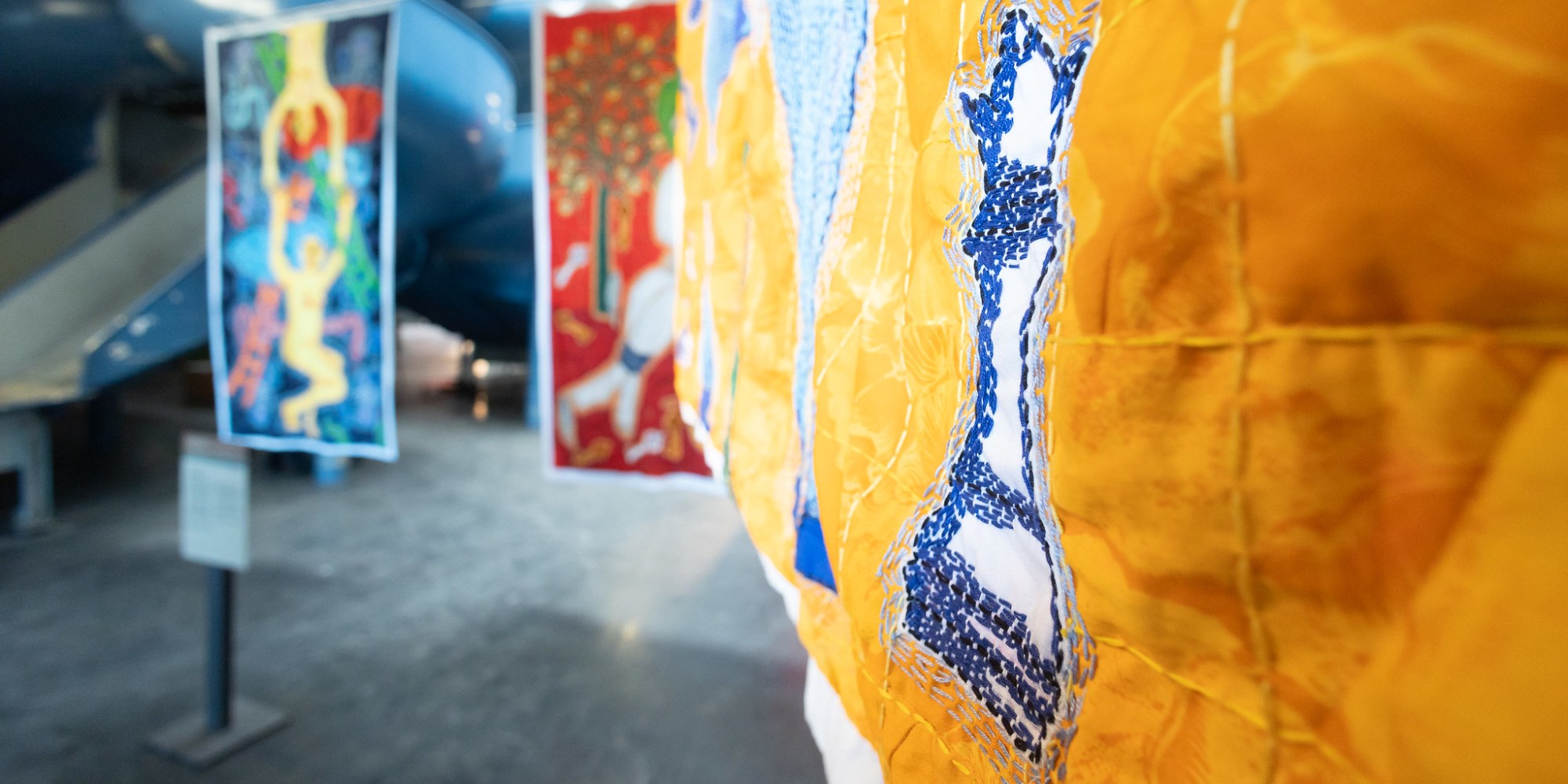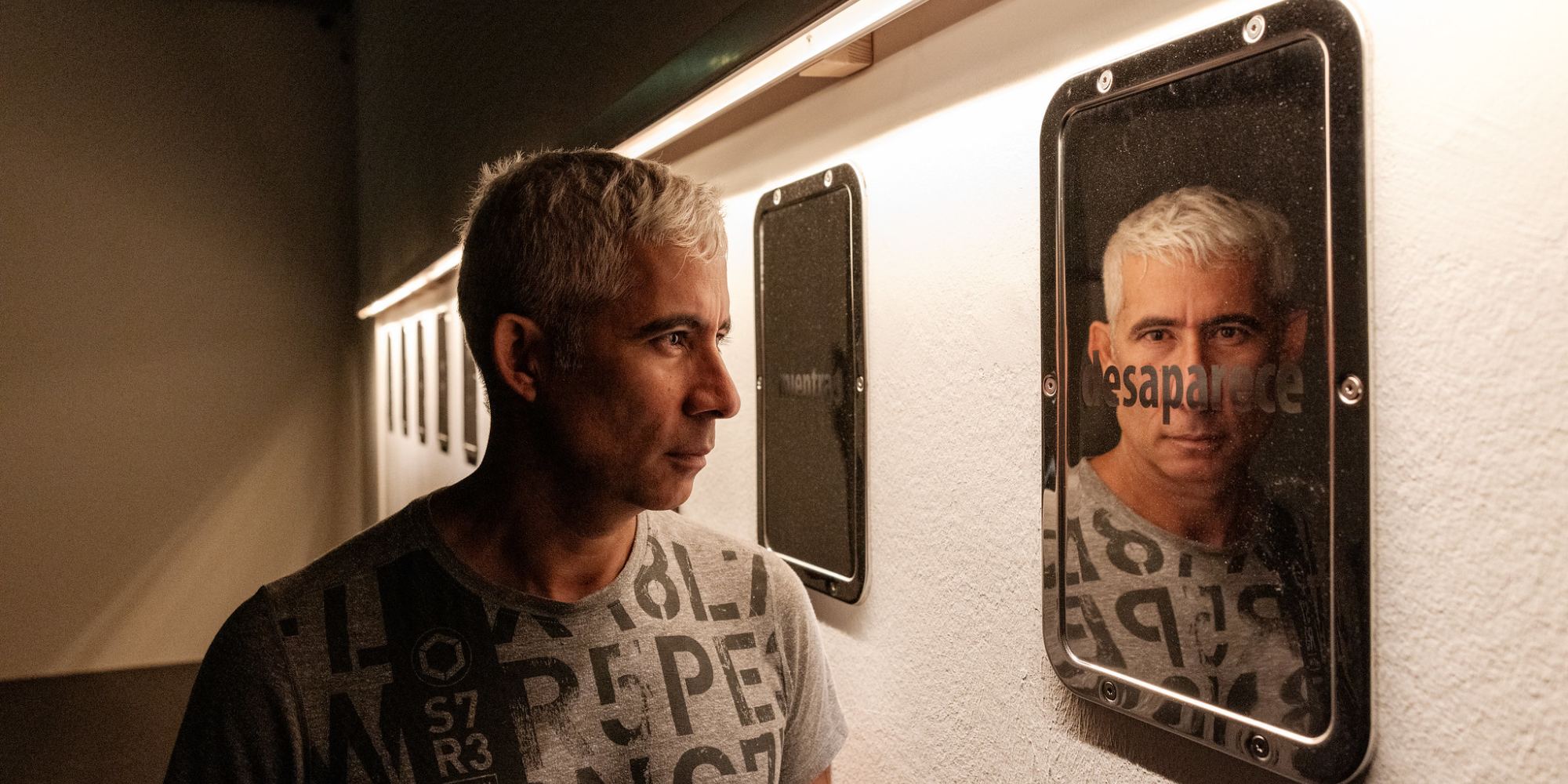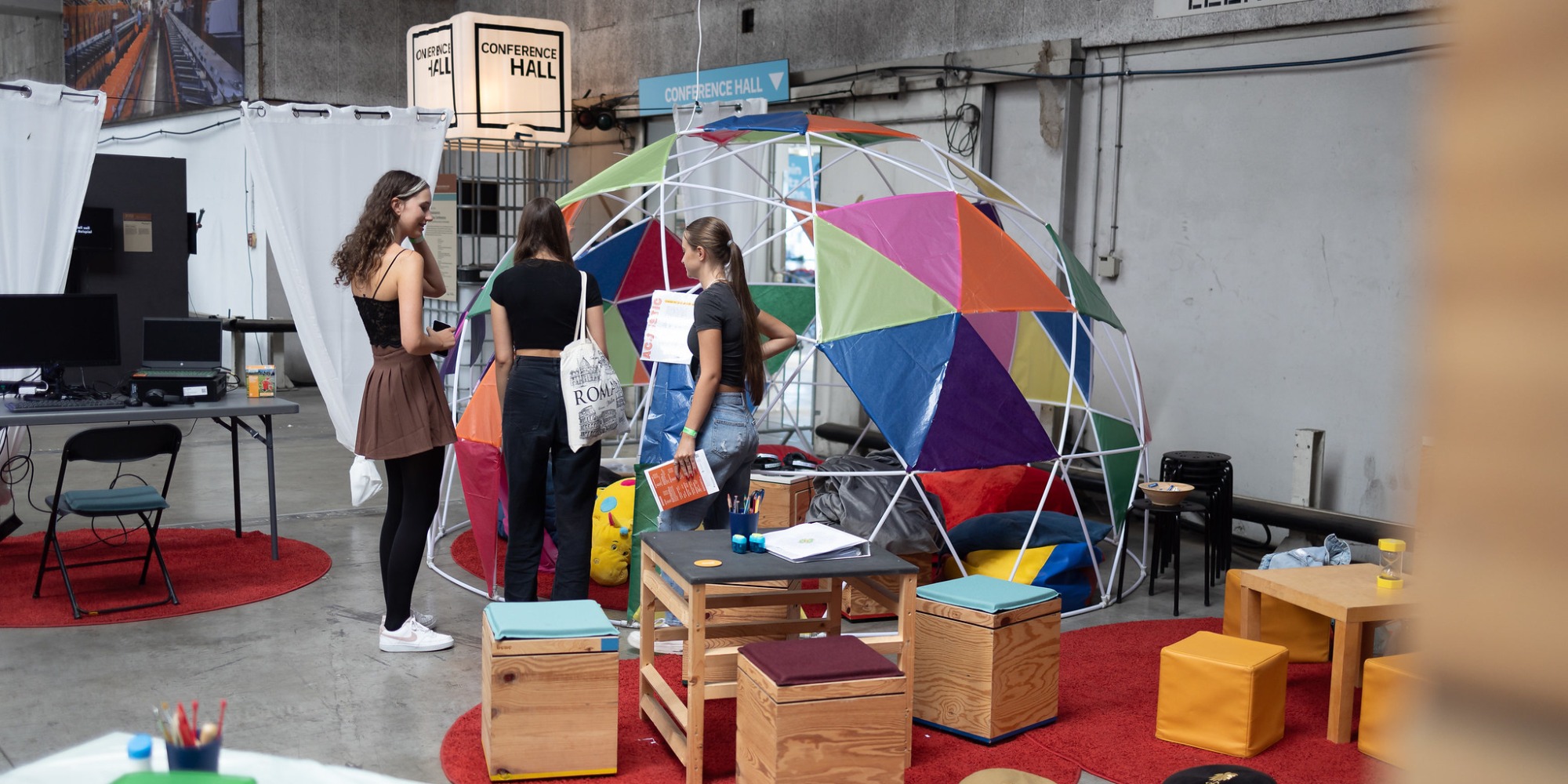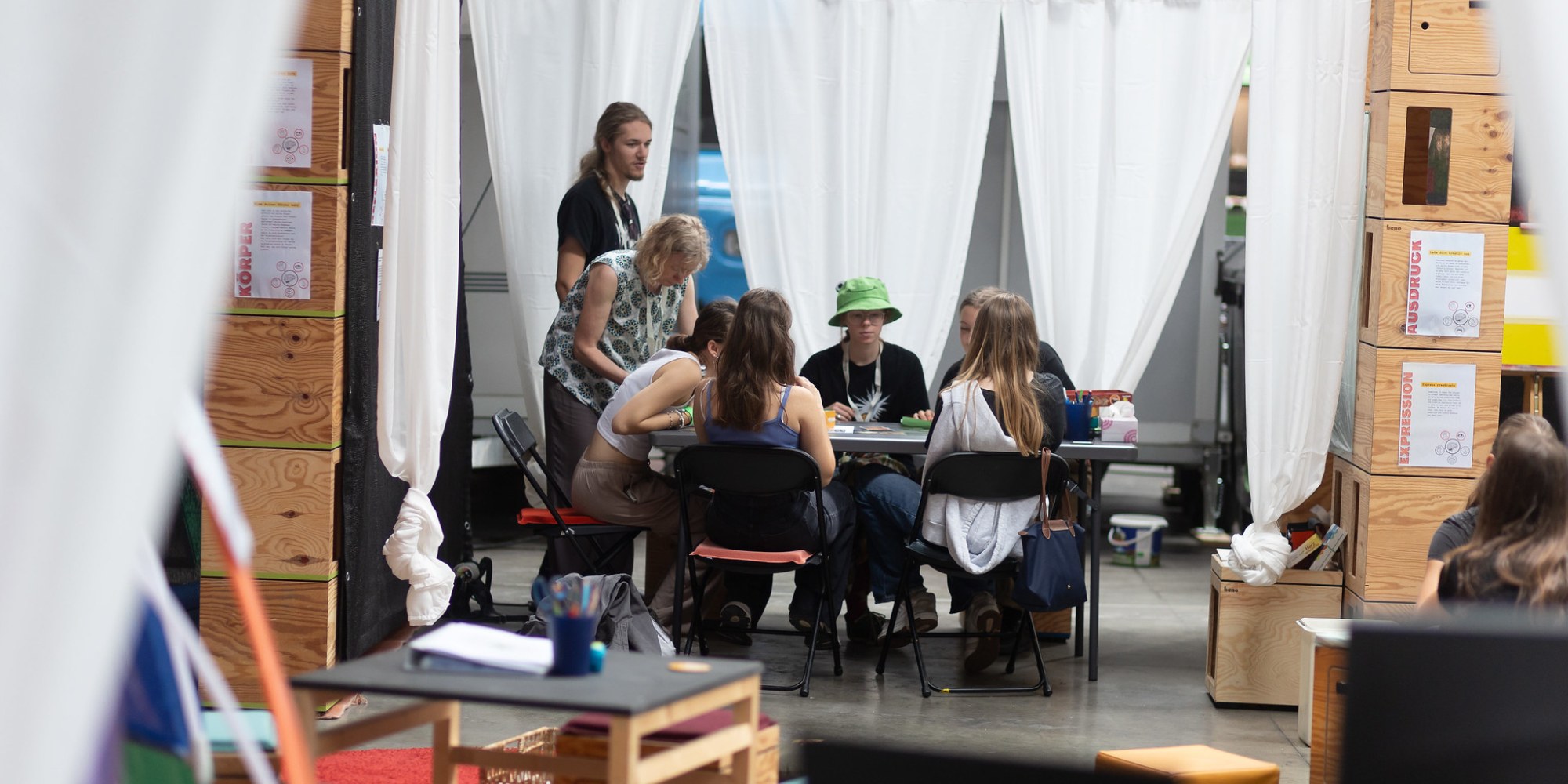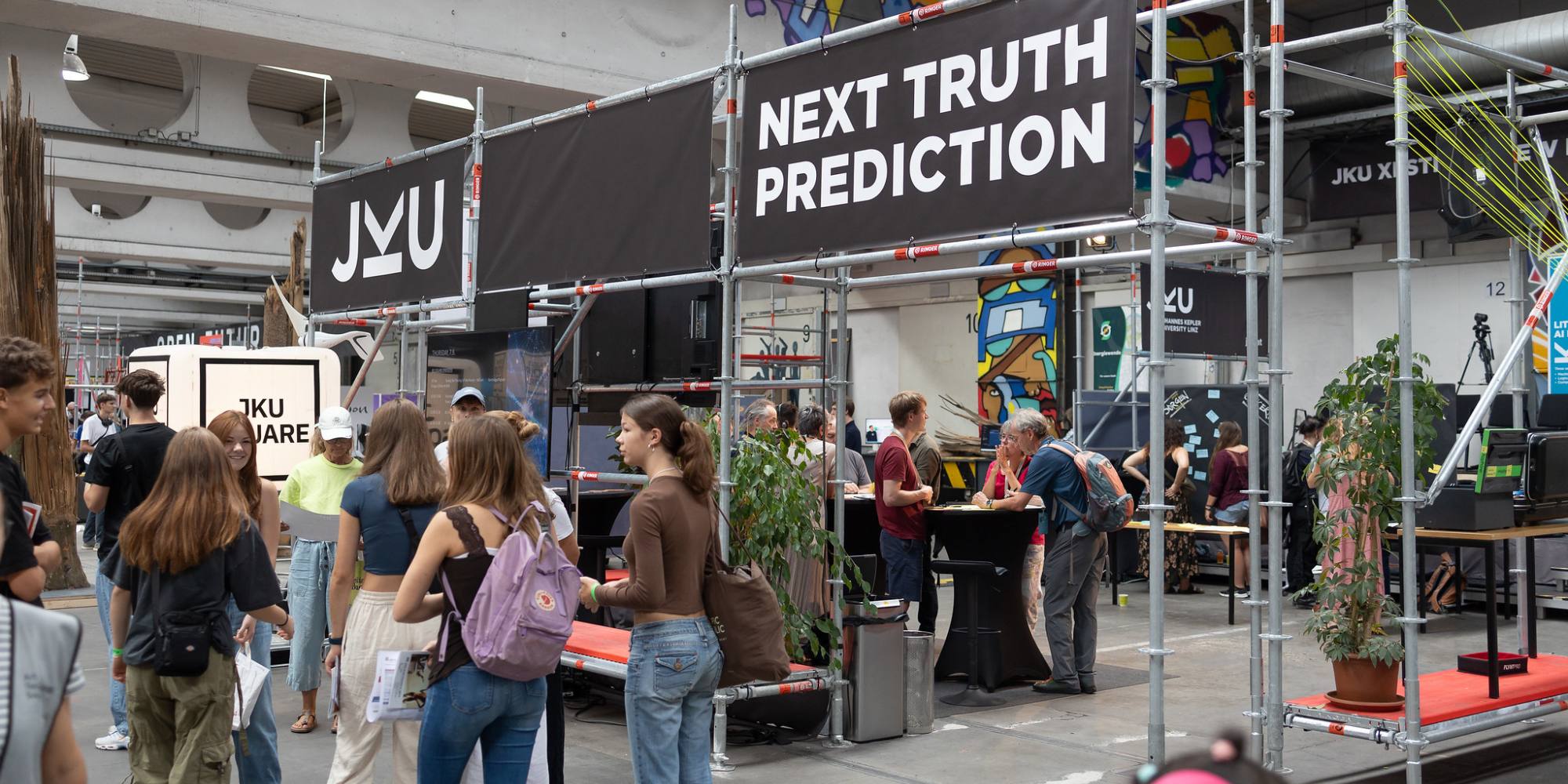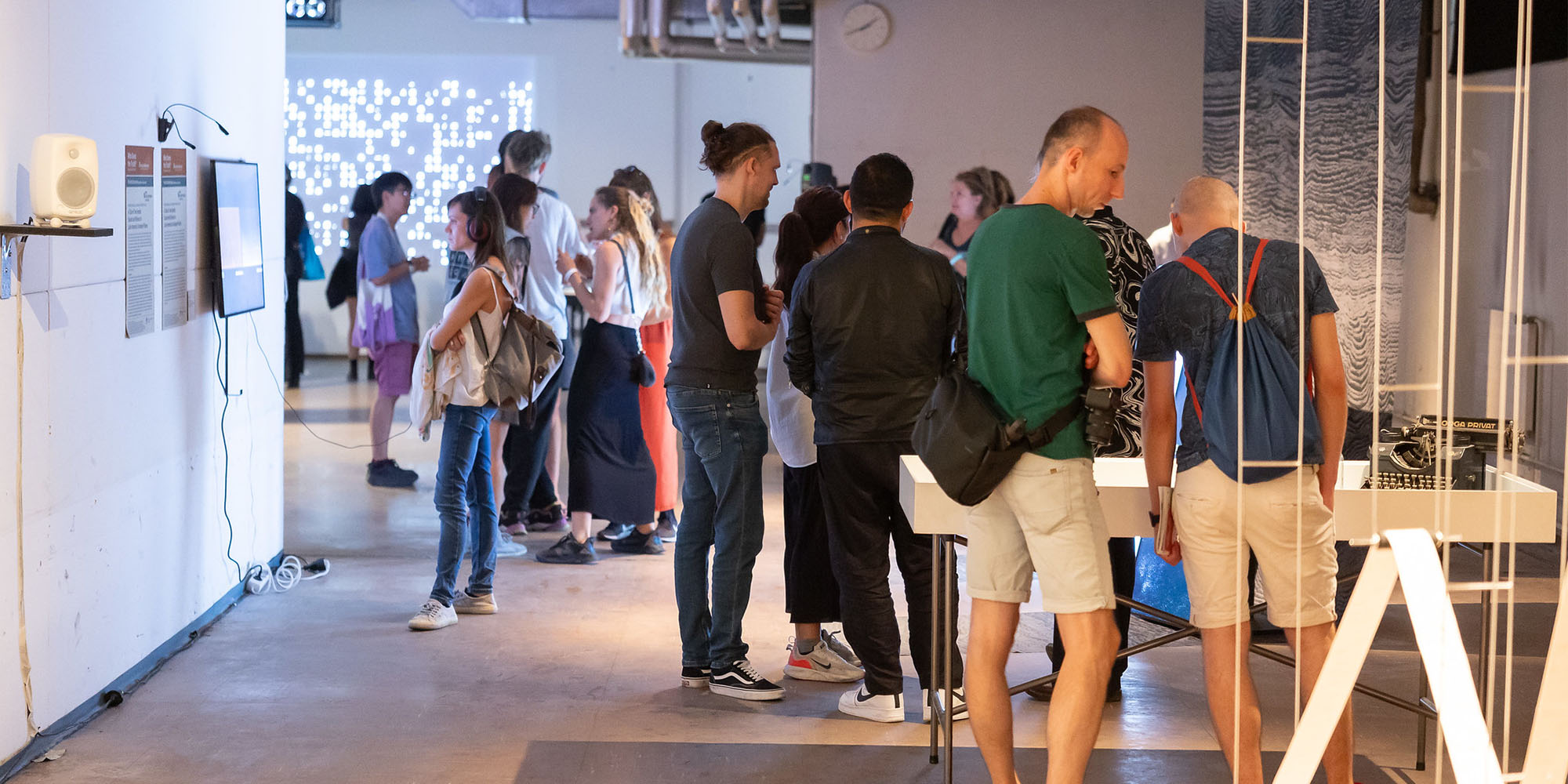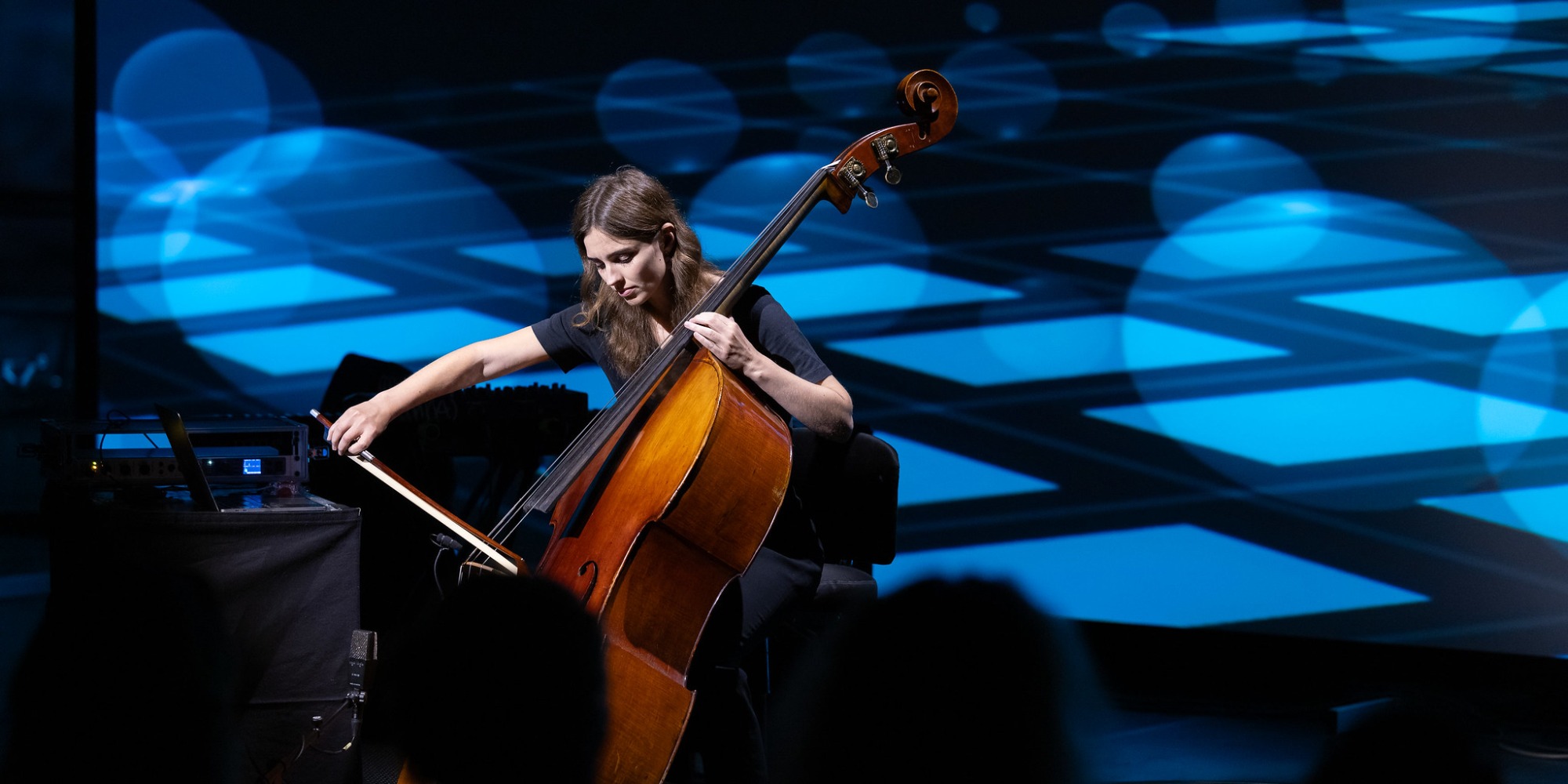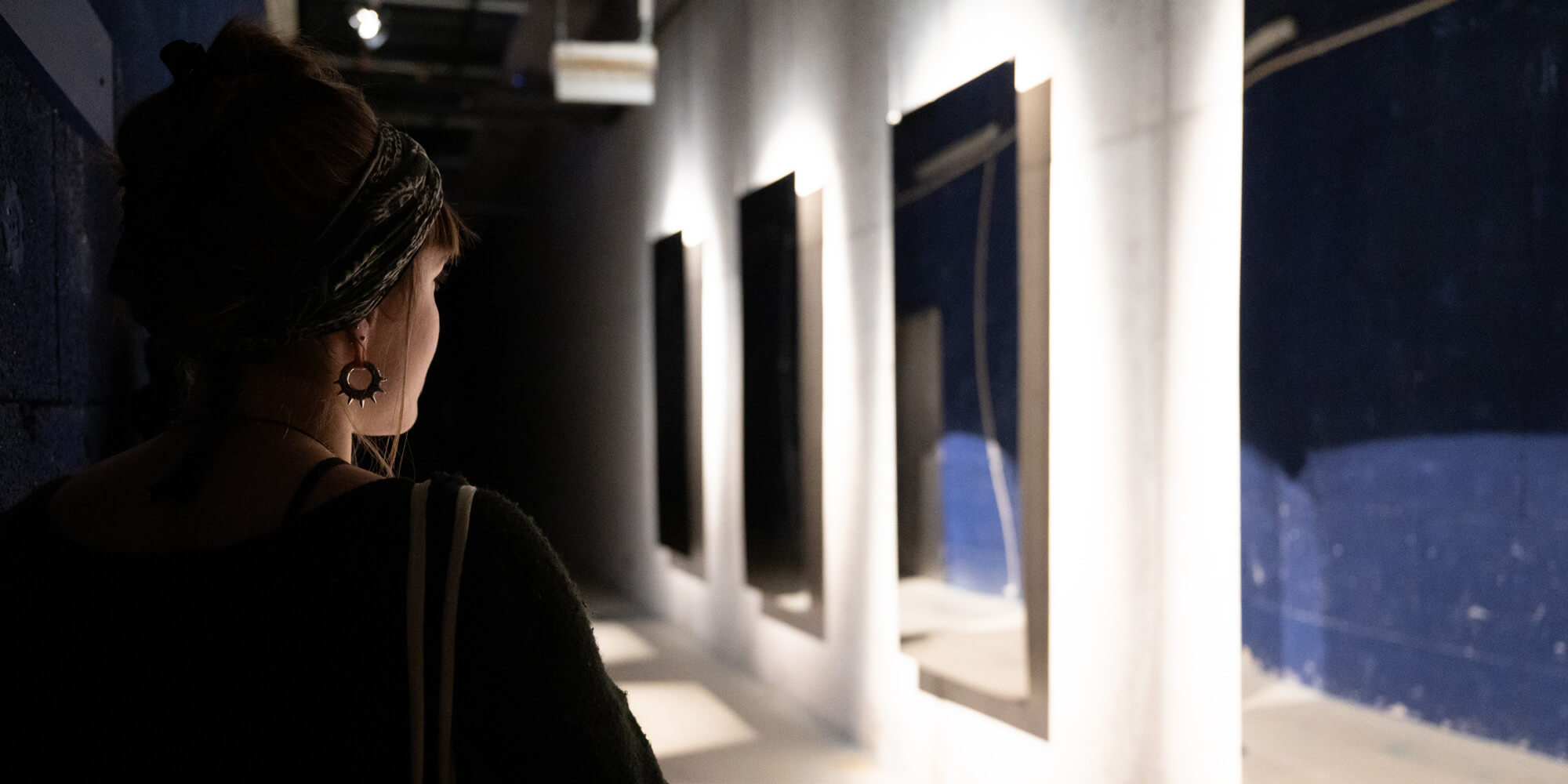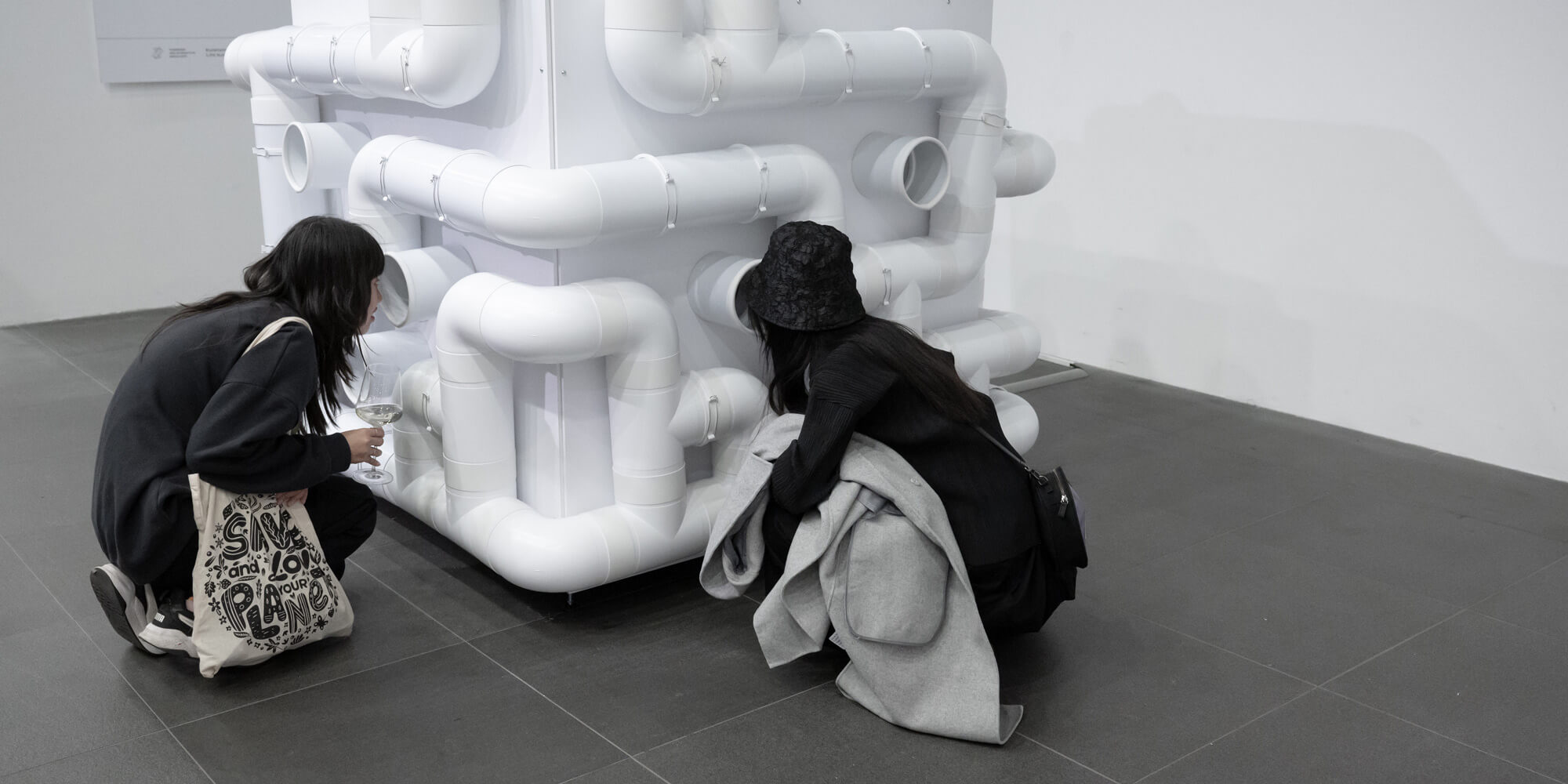The year is coming to an end, but before it does we want to look back on a year of creativity, challenge and inspiration.
In 2023, the media art world continues to operate at the intersection of tradition and innovation, marked by an era of global challenges and technological advances. This year has been a kaleidoscope of creative expression, reflecting both the fragility of our global community and the indefatigable power of human creativity.
The pandemic has had a lasting impact on artists worldwide, inspiring exploration of themes such as isolation, community, and the human condition. Additionally, the digital revolution has opened up new horizons, with artists using technology to create immersive and interactive experiences, from virtual exhibitions to groundbreaking digital artworks enabled by AI and augmented reality.
Social and political movements have had a significant impact on the art scene. This year, works dealing with topics such as equality, climate change, and social justice were particularly prevalent, testifying to a growing tendency in the art world to actively engage in social discourse.
Through international open calls, collaborations, and the Ars Electronica Festival, we aim to reach a wider audience and provide visibility to artists in precarious situations.

Innovation and resistance: artistic responses to current conflicts
We work with partners around the world to support artists throughout the year. We initiate and support open calls, curate exhibitions and conferences and much more. We present the results of these projects at the Ars Electronica Festival in September – an avant-garde stage for performances, an international platform for networking and an interdisciplinary forum for discussion.
In 2023, the State of the ART(ist) project marked a turning point in the artistic examination of global challenges. The initiative was launched in 2022 in response to the conflict in Ukraine and was a collaboration between the Austrian Foreign Ministry and Ars Electronica. This year, the project has broadened its scope to showcase the work of artists whose creative output is impacted by a range of challenges, including conflicts, political pressures, limitations on freedom of expression, natural disasters, and the climate crisis.
An impressive example is Taiye Ojo, a Nigerian artist, eco-activist, and writer. Ojo’s work, AND IF WE OBSERVE THE PRESENT, is dedicated to highlighting the devastating effects of oil pollution in Ogoniland. Ojo uses a combination of visual, acoustic, and interactive elements to draw attention to issues such as endemic abuse, exploitation by oil companies, the culture of silence, and the consequences of neo-colonial policies.

The Iranian installation artist Jowhar is equally impressive. She symbolises the power of words and their recreation through her installation of tear jars filled with ink instead of tears. Her installation carries a moving message: ‘The future is only a part of the past that has been forgotten.’
The Ars Electronica Festival 2023 at POSTCITY showcased these exceptional projects based on their artistic quality. They were presented alongside seven other contributions by artists from around the globe who received Honorary Mentions.
In 2023, the Ars Electronica Festival in Linz showcased a fresh perspective on media art and global challenges from Latin American artists. The CIFO-Ars Electronica Awards were presented to emerging Latin American artists who work with technology in the field of new media and digital art. Over 100 artists from 13 different countries submitted their work for the CIFO x Ars Electronica Awards in 2023, and three were honoured during the awards ceremony. It featured works by Ana María Gómez López, Jonathan Torres Rodríguez, and Joaquín Aras, as well as contributions from the six winners of the CIFO Award. The exhibition Dualities in Equalities: Art, Technology, Society in Latin America was presented at the LENTOS Kunstmuseum Linz as part of the Ars Electronica Festival 2023. The artists’ projects were honoured as part of the CIFO x Ars Electronica Awards.

In addition, this year, five artworks were once again honoured as part of the VH AWARD, a leading Asian award platform for emerging media artists. The VH AWARD was launched in 2016 by the Hyundai Motor Group with the aim of promoting artists who engage with Asia and its future. The award winners are given the opportunity to further develop their artistic concepts and experiments during the Eyebeam Online Residency. Furthermore, the VH AWARD provides artists with access to various global art platforms, such as the Ars Electronica Festival 2023, where the works of the 5th VH AWARD finalists were exhibited.
Subash Thebe Limbu, an artist from East Nepal, won the prize for his work ‘Ladhamba Tyem; Future Continuous’. The film explores the presence of indigenous peoples in the space-time continuum through dialogues between a Yakthung warrior from the 18th century and an indigenous astronaut or time traveller from the future. The aim of the film is to raise awareness of the ongoing struggle against colonialism. Additionally, the audience is encouraged to reflect on their own role in actively shaping the future.
A kaleidoscope of creativity
After spending three years on the green campus of Johannes Kepler University, the Ars Electronica Festival 2023 returned to the halls of the former postal distribution centre on the outskirts of Linz, POSTCITY. The festival hosted 1542 participants, including artists, scientists, developers, designers, and activists from 88 countries. The themed exhibition of the festival, (Co) Owning More-than-Truth, aimed to challenge dominant norms and encourage critical reflection on the concept of ownership in a global context.
As part of the AIxxNOSOGRAPHIES project, made possible by the collaboration between Ars Electronica and Deutsche Telekom, Špela Petrič and Studio Teratope are investigating the use of AI in healthcare. The project invites participants to assume the role of amateur ethnographers and explore infrastructures related to AI applications in healthcare.

As part of Organ Of Radical Care: Una Matriz Colaborativa, supported by the European initiative EMAP and created by Charlotte Jarvis and Dr Patricia Saragüeta, menstrual blood was collected and used to construct a collaborative uterus. The Biosymbiotic Exoskeleton project, funded by EMAP and led by Dorotea Dolinšek, aims to design a spacesuit that serves as a life support system. The project not only considers the symbiotic relationships between humans, technology, and non-human life forms but also investigates our capacity to respond to environmental challenges.
Since 1987, the Prix Ars Electronica has showcased media art from around the world. As a trend barometer, it provides current and forward-looking insights at the intersection of art, technology, and society. This year, the Ars Electronica Festival provided a platform for the media art prize winners to present their visions, ideas, and projects to a wide audience. The Prix Ars Electronica Exhibition featured award-winning media art, while the Prix Ars Electronica Forum provided a platform for experts and the public to discuss this art. A total of 3,176 projects from 98 countries were submitted to the Prix Ars Electronica 2023. The winners in the categories of New Animation Art, Digital Musics & Sound Art, Artificial Intelligence & Life Art, and u19 – create your world were Ayoung Kim, Atractor Estudio + Semantica Productions, Winnie Soon, and Sonja Höglinger.
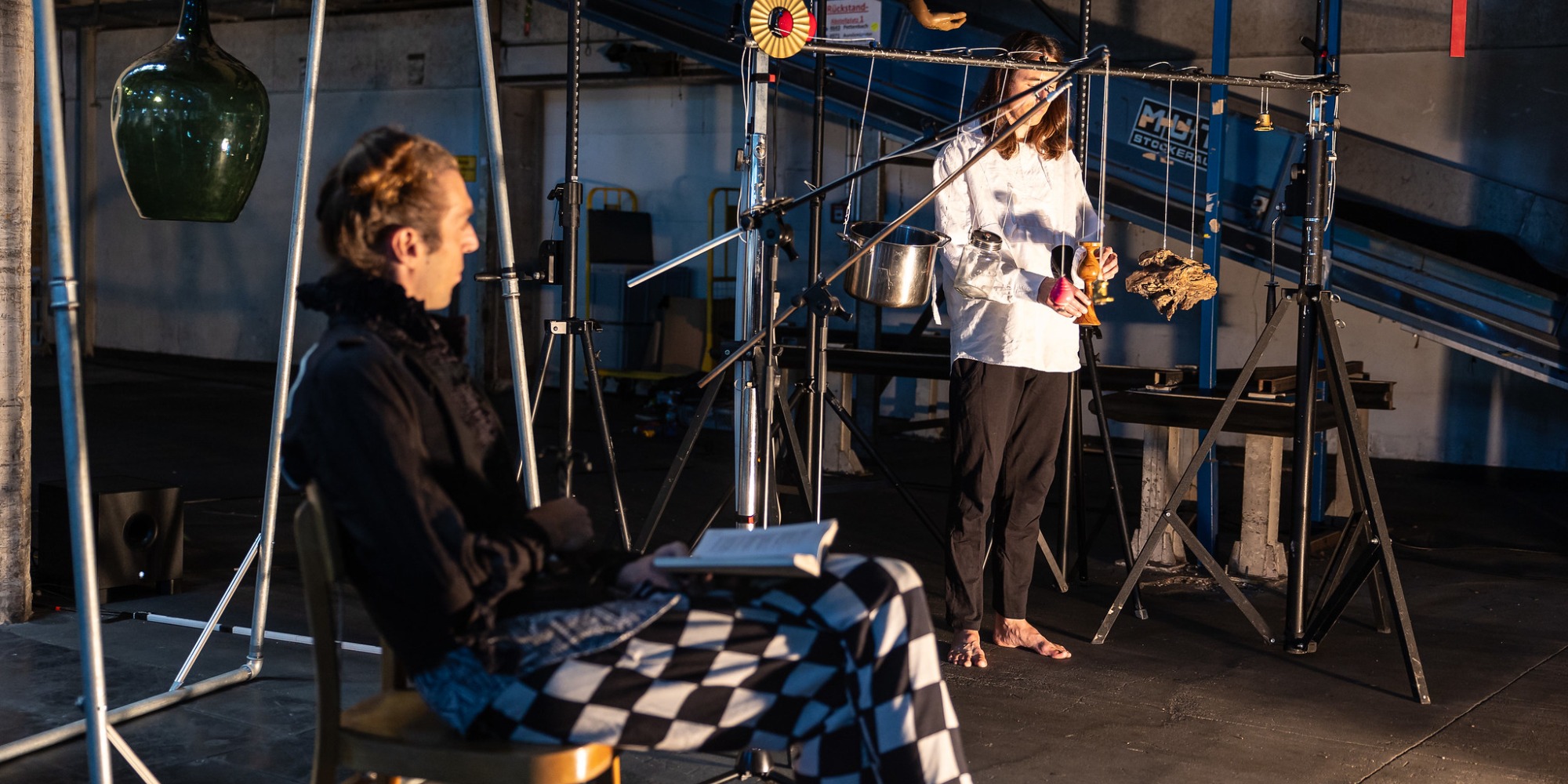
Swiss art on Austrian soil amidst the inspiring ambience of an international festival could be experienced this year during the Ars Electronica Festival. This was made possible by the ArTS Production Grant, which supports individual artists or groups of artists with Swiss citizenship or residency in Switzerland in the development of a new project or the expansion of an existing project. The award-winning projects presented at the festival were characterised by their fascinating and unique perspectives on contemporary issues and challenges. They offered the audience an exciting opportunity to experience and explore the intersection of creativity and innovation. This focus on Swiss artists was realised in collaboration with the Swiss Arts Council Pro Helvetia. The diversity and quality of the works on display impressively emphasised the importance of the Swiss art scene in an international context and offered a deep insight into the country’s creative landscape.

This year, the work BROOD (The Second Body) by Dorota Gaweda and Eglė Kulbokaitė was selected. BROOD is a multi-channel video installation that combines various elements, including scenes shot on location, staged green screen footage, CGI, algorithmically generated sequences, and found footage. The installation explores the fundamental particles of nature and the multitude of spirits of folklore, examining the integral strangeness of the world and the interactions and processes between them. These interactions are not only considered metaphorical, but also as processes that have the potential to reshape our world.
But not only projects from Switzerland, but also the numerous art projects from Taiwan invited visitors on an exciting journey into the world of creativity, innovation and intercultural exchange. Taiwan’s dynamic presence at the festival, with a series of performances, panels and exhibitions, was an impressive testament to its rich artistic and technological heritage.

The media dance performance Mirage Replicas 2.0 by Yen Tzu Chang was presented at the Ars Electronica Festival in the unique setting of the Mariendom. The performance explores the differences between generations in terms of family and culture.
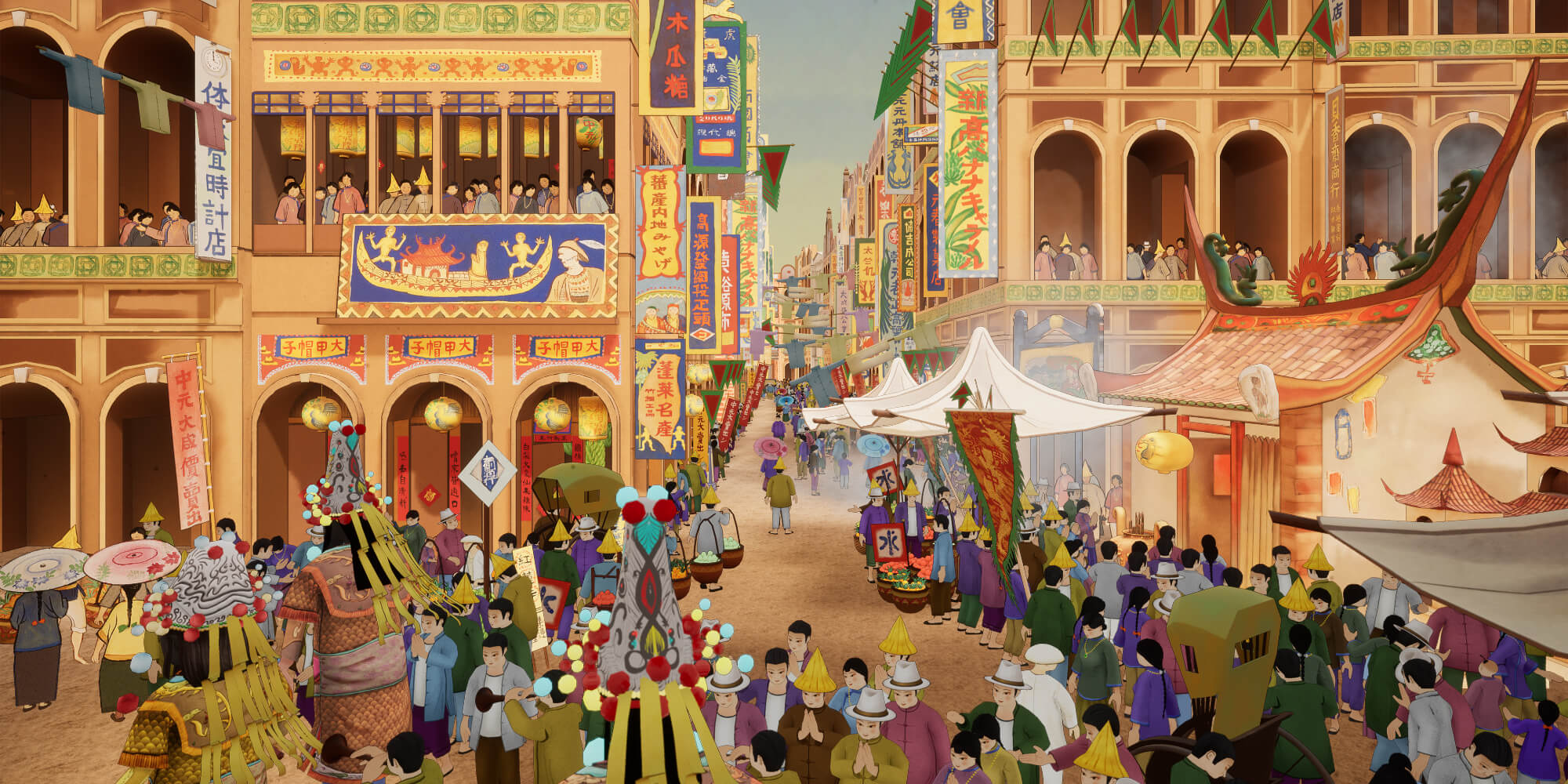
The Ars Electronica Campus featured a strong Taiwanese presence, with Taipei National University of Arts showcased as a featured university of the festival. Their exhibition, Epicentrum, was displayed in the Splace and highlighted Taiwan’s unique position at the geological interface of tectonic plates amidst a tense global situation. Furthermore, the Campus Exhibition at POSTCITY included the National Tsing Hua University Centre for Technology and Art’s exhibit titled ‘A Face Drawn in Sand’. This title echoes Michel Foucault’s prediction that a change in the design of the knowledge system will bring an end to the human age.

Virtual walks and the future of media art
The Ars Electronica Centre has become a prominent platform for contemporary artists and the exploration of virtual art. Situated in Linz, it serves as a creative interface that connects innovative art projects with pioneering media technologies. In 2023, the centre has once again demonstrated its role as an incubator for artistic visions and a showcase for groundbreaking developments in media art.
The centralisation of the University of Art and Design Linz at an inner-city location has had a significant impact on the urban development of Linz. In 2023, the University of Art celebrated its 50th anniversary with various thematic focal points over a period of nine months. Two of these highlights, TIME OUT and Best Off, were also featured at the Ars Electronica Centre.

Best Off is an innovative presentation format that showcases selected works by art students and graduates of the University. The presentation provides a platform for discussing a wide range of projects, ideas, and installations from the past academic year. The selected works offer insight into the diverse educational programme and divergent approaches at the University of Art and Design Linz.
The twelfth TIME OUT exhibition series has opened at the Ars Electronica Centre, showcasing a selection of the most exciting works by students from the University of Art and Design. The language used in this text is clear, concise, and objective, with a formal register and precise word choice. The text adheres to conventional structure and formatting features, with consistent citation and a clear marking of quotes. The text is grammatically correct and free from errors. No changes in content have been made, as per the instructions provided. The Time-based and Interactive Media Art degree programme provides students with ample opportunities to develop and experiment as media artists, with interactive installations, film experiments, visual and sonic arts, deep space applications, and performances. The works created by the degree programme are diverse, just like the programme itself. At the Ars Electronica Centre, these works provided visitors with new perspectives and access to unconventional, young art.

The Deep Space 8K was a highlight due to its virtual reproductions of cultural treasures. These reproductions revealed art-historical details that are not visible in analogue reality. The virtual experiences included the discovery of central perspective, which was once constructed by Leonardo da Vinci with a pinprick. Additionally, virtual walks through the alleyways of Venice and into the crypt of St Mary’s Cathedral in Linz were available. These digital experiences highlight a new dimension of art viewing and underscore the significance of media art for the future.
If you would like to join us on this exciting journey next year and become part of the Ars Electronica platform, you are cordially invited to follow us on our social media channels such as Mastodon, Facebook, Instagram, LinkedIn and YouTube, to subscribe to our newsletter or to visit us at the Ars Electronica Centre.
